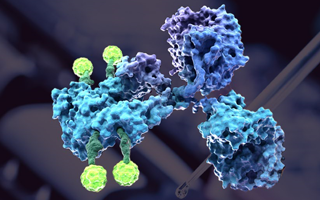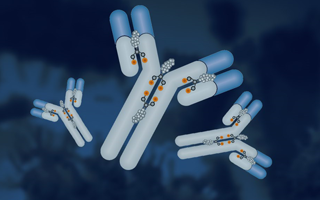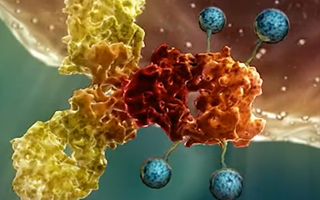Peroxisome Positioning Intrabody Development Service
Creative Biolabs has identified a series of peroxisome residing motifs with varied specificity and strength. Our scientists are pleased to tailor specific peroxisome positioning intrabody to facilitate our clients’ research.
Peroxisome Positioning
Peroxisome or microbody is a matrix surrounded by a specific membrane and virtually found in all eukaryotic cells. Physiologically, it is involved in the catabolism of very long chain fatty acids, branched chain fatty acids, D-amino acids, polyamines, and reduction of hydrogen peroxide. Since peroxisome neither contains DNA nor protein synthesis machinery, it needs to import nuclear encode protein content folded or oligomerized from the cytosol via peroxisomal targeting signal (PTS). PTS is a short targeting sequence in the C-terminal extension mostly to be recognized and bound by receptors. Generally, there are three categories of PTS identified up to now:
Peroxisome targeting signal 1 (PTS1)
As the original tripeptide prone to be imported into the peroxisomal matrix, PTS1 is the most abundant matrix proteins target signal and universal but species-specific. Since PTS1 is highly conserved in yeasts, plants, and mammals, the extreme C-terminal tripeptide can be abstracted with several consensus sequences.
Particularly, PTS1 interacts with its corresponding receptor (PEX5 gene) to initiates the translocation via trapping PTS1 by TPR domain remodeling, in which PTS1 is locked in a groove with various interactions towards both sets of 3 TPR-motifs linked together by a helical hinge. In some cases, proteins without PTS1 applies “piggy-back” mechanism to be translocated into peroxisomal matrix together via associated with PTS1-possessing matrix proteins.
Since the consensus tripeptide sometimes does not suffice for peroxisomal targeting, further research discovered an enlarged dodecamer up to 12 C-terminal residues consisting of the tripeptide, 5 residues upstream the tripeptide and 5 residues with polar properties more upstream.
Peroxisome targeting signal 2 (PTS2)
As another category of PTS, PTS2 is a nonapeptide located near the N-terminus with a consensus sequence binding to the PTS2 receptor (PEX7 gene) among Homo sapiens, Mus musculus, Ratus norvegicus, Saccharomyces cerevisiae, Kluyveromyces lactis, Arabidopsis thaliana, etc.
PEX19BS for peroxisomal membrane proteins (PMPs)
As for peroxisomal membrane proteins, mPTS motif destines for their localization, which usually is a cluster of basic amino acids (arginines and lysines) within a loop between membrane spans facing the matrix.
Other Anchoring Modification Options provided by Creative Biolabs
Including the peroxisome, Creative Biolabs can also develop specific positioning antibody for a variety of destination, which including but not limited to:
| Extracellular Space | Extracellular Plasma Membrane | Intracellular Plasma Membrane | Cytoplasm |
| Nucleus | Endoplasmic Reticulum | Golgi Apparatus | Mitochondria |
| Chloroplast | Lysosome | Peroxisome | Vacuoles |
Creative Biolabs offers the first-rate strategy to develop novel intrabodies based on our highly powered and sophisticated platforms. Our seasoned scientists are dedicated to offering the best service to assist our clients’ project. If you are interested in developing novel intrabody, please do not hesitate to inquire us for more details.
All of our antibody products and services can only be used for preclinical research studies. Do not use them on humans.
Related Services:
- Extracellular Space Positioning Antibody Development
- Extracellular Plasma Membrane Positioning Antibody Development
- Intracellular Plasma Membrane-Anchored Intrabody Development
- Cytoplasm Positioning Intrabody Development
- Nucleus Positioning Intrabody Development
- Endoplasmic Reticulum Positioning Intrabody Development
- Golgi Apparatus Positioning Intrabody Development
- Mitochondria Positioning Intrabody Development
- Chloroplast Positioning Intrabody Development
- Lysosome Positioning Intrabody Development
- Vacuole Positioning Intrabody Development

Welcome! For price inquiries, please feel free to contact us through the form on the left side. We will get back to you as soon as possible.
Contact us
USA
Tel:
Fax:
Email:
UK
Tel:
Email:
Germany
Tel:
Email:







